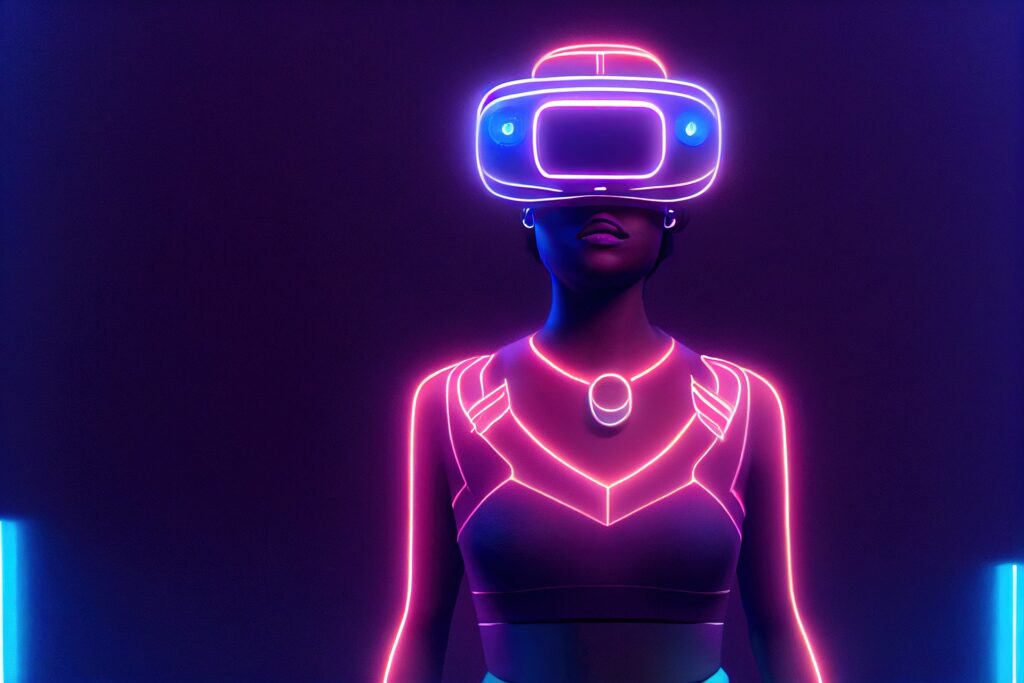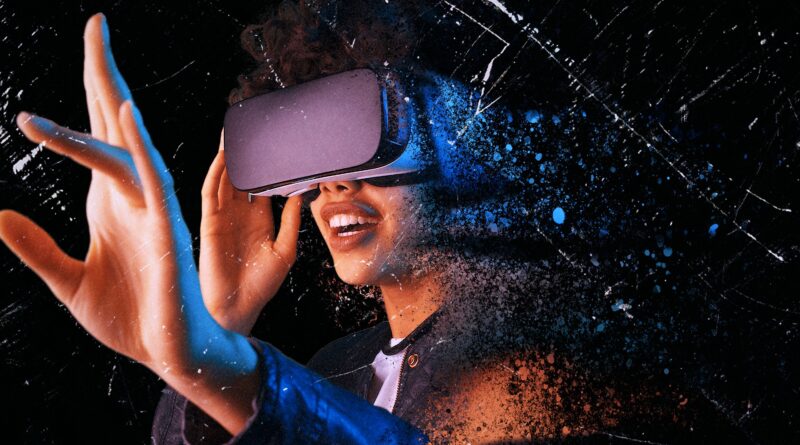Today the metaverse has emerged as a buzzword and a household term. Facebook, Microsoft, Hyundai, Gucci (Gucci Vault Land) and many other industry giants incorporated the futuristic virtual realm into their technological framework.
The hype over the metaverse started booming soon after Mark Zuckerburg announced his decision to rebrand Facebook to Meta in October 2021. According to MRS Digital, there were 2.62 million searches for the term ‘metaverse’ in the same month.
In this ultimate guide to the metaverse, we dive into the various attributes of this revolutionary, innovative internet technology, accessibility, and uses.
Metaverse- An Overview
The term ‘metaverse’ is a portmanteau created by merging the words ‘meta’ and ‘universe’. It was first contrived in 1992 by author Neal Stephenson in the science fiction novel Snow Crash.
But what does the ‘metaverse’ means? Why is it so important?
Some people relate this innovation to modernized video games, while others think of non-fungible tokens (NFTs), blockchains and cryptocurrencies. Several companies rely on the metaverse environment to connect with their potential clients and consumers in custom virtual space through virtual reality (VR), augmented reality (AR), and artificial intelligence (AI).
All the above technologies, including Web 3.0 are various aspects of the metaverse…an ever-expanding technological spectrum on the internet. This multi-faceted 3D space allows people to develop cyber-replicated characters (also known as digital facsimiles or avatars) and objects as a medium to communicate, collaborate, buy, sell, play games, and indulge in various immersive activities online.
Metaverse is a shared and interoperable virtual world widely considered the ‘future of the internet’. This broad-spectrum technology offers a 3D interactive shared environment that allows users to do almost anything online that may not be possible in the physical world.
Currently, the metaverse is used across various industries- education, video games, fashion, healthcare, corporate businesses, etc. As per reports by Strategic Market Research, the metaverse global market size reached $47.48 billion in 2022 and is estimated to expand to $678.80 billion by 2030.
Metaverse is for everyone using the internet for several hours a day. Whether you are an active social media user, someone looking to make money with virtual currencies, a start-up owner, a freelancer, or a passionate gamer, metaverse offers endless possibilities to achieve enhanced experience with whatever you do online. The best part, it facilitates businesses to develop their own version of the technology to address specific requirements.
Why is the Metaverse Vital for Businesses
It is no surprise that more and more corporate organizations are looking to incorporate the metaverse into their business infrastructure. The reason is obvious. Amid the highly competitive market scenario, an all-inclusive 3D web technology plays the game changer in offering an enhanced user experience.
This dynamic technology facilitates users to implement a pool of interconnected systems in the digital environment. It is an online technological evolution allowing shared spaces to users while eliminating the limitations of geographical barriers. Users can access multiple resources from any location on their systems via a high-speed internet connection, VR devices, etc.
What Can Users Do in the Metaverse

The concept of metaverse gets clear with the precise understanding of things you can do using this digital evolution. It widens the room for possibilities for users across various industries. Herein is a synopsis of things you can do in the metaverse:
-
- Create Your 3D Avatars
The revolutionary metaverse technology allows users to take their online experience beyond traditional practices. The most exciting part of the process lies in developing digital facsimiles to represent a user on the internet.
Most metaverse platforms offer an intuitive character editor interface to develop custom 3D avatars. Avatars are replicas of humans on the internet, serving as a mode to communicate, collaborate, share, work, play games, or do anything based on the platform and your requirements. Enjoy your online activities on realistic hologram objects, including the entire screen space.
-
- Communication
The decentralized environment offers additional touch points to communications on the internet. From messaging placements to transparency, brands can focus on creating niche-centric promotional strategies to connect with the target audience. Create immersive advertising material with virtual billboards.
-
- Accent Entertainment
The metaverse blockchain has unleashed enormous scope for the media and entertainment industry. Augmented reality allows event organizers to superimpose interactive digital elements into live events, stage shows, and other entertainment programmes. It provides enhanced audio-visual appeal in real-world ecosystems.
Nowadays, interactive storytelling and shows are already gaining heights on Netflix and other platforms. As the music industry embraces technology, it has adduced a potpourri of virtual entertainment options for fans worldwide. Nicki Nicole and Claire Elise Boucher (popularly called Grimes) made headlines soon after their rocking performances at the Metaverse Fashion Week in March 2022.
Virtual-world simulator, the patented metaverse owned by Disney, eliminates the barrier between the real and digital worlds. The new technology displays 3D visual effects and images in the Disneyland premises for visitors without using any computer screen or other VR devices.
-
- Take Your Business on the Virtual Platform
Geographical barriers and hours of travelling to collaborate with the workforce are things of the past. Today VR technology enables users to set up a virtual workspace, conduct online meetings, training sessions, and more without driving to the office. Remote working gets an extra edge as professionals connect on the digital platform using a VR headset for teamwork on a project.
-
- VR Interactive Education
Metaverse enables students to enter the virtual world of learning using wearable devices. Learners can develop memes such as intelligent non-player characters (NPCs) to explore virtual resources. The opportunity to create digital overlays of real-world elements with AR bestows an interactive, immersive, and engaging learning environment.
Students may also create virtual study rooms for socializing, interactive sessions, school projects, group studies, etc. Instructors may use the mirror world technology using a video conferencing setup to create a real-world experience for the learners.
-
- Revolutionized E-Commerce Shopping
In this age of go-getting competition, brand owners impose high-tech strategies to improve customer experience (CX). E-commerce businesses are fast leveraging measures to integrate metaverse into their online store infrastructure.
How does metaverse e-commerce help buyers?
At a retail store, customers can check the goods physically. Traditional online shopping hinders buyers from trying a product by physical touch before purchase. Herein metaverse gains prominence in the e-commerce industry. The emerging mechanism eliminates the limitations of cyber shopping by creating a virtual environment for the buyers to get an enhanced look and feel of the merchandise rather than a few photos and a short video.
Amazon’s Room Decorator is an AR tool that allows buyers to view how various furniture and home décor products will look in their living room. The app is accessible on Smartphones and tablets that can help you find out pieces that match your room size, wall colors, and other attributes.
-
- Enhanced Healthcare Systems
Metaverse technologies are all set to transform medical services and facilities in various spheres of the healthcare ecosystem.
Today ophthalmologists implement augmented reality mechanisms to identify neurological markers, track eye movements, and identify other complications. Simulated OTs facilitate immersive training for medical students allowing the trainers to use digital twin organs in simulated surgical procedures.
XRHeath, the premium company offering metaverse technology for VR therapeutic services, has merged cognitive training from NeuroReality to its virtual clinics.
Technologies Empowering Metaverse Development

Metaverse is a dynamic and evolutionary technology emerging from multiple ‘tech themes’. The chief technologies used in the development of a metaverse environment are:
#1. Virtual Reality (VR) and Augmented Reality (AR)
While the 3D reconstruction creates a life-like experience on the computer, the AR and VR applications offer the entry point to the immersive experience in the 3D model environment.
However, there are differences in the way AR and VR technologies work.
An AR app on your digital devices serves as a medium to see the interactive real-world surroundings. The AR-powered interface on Pokémon GO allows the players to use their phone camera to view Pokémon in the physical world.
VR is an enormously popular video gaming technology. Gamers can get an accented virtual world experience with compatible devices- VR headsets, gloves, VR full-body tracksuits, etc.
The prime difference between AR and VR technology is that the latter can produce only computer-generated simulations taking users in the digital world. It cannot create real-world simulations- the chief essence of metaverse technology.
#2. Brain-Computer Interface (BCI)
BCI may raise widespread possibilities for implementing a metaverse in medical science. Today BCI helps patients use prosthetic devices, self-driving wheelchairs, etc. The futuristic technology may enhance communications and sensory connectivity via electrophysiological signals.
#3. Artificial Intelligence (AI)
AI is not limited to using chatbots on business websites. Today custom AI applications have become an integral part of modern lifestyle whether you are at a self-checkout kiosk system in a hotel or riding an automated vehicle.
In the metaverse, AI plays a crucial role in interacting with users. From answering vital questions to guiding a customer through the transaction procedure, AI systems perform diverse functions for various businesses. AI technology integrates seamlessly with Natural Language Processing (NLP) and translation software programs to facilitate accessibility in the native language.
Users can access AI technology to create digital avatars by using various assets such as images, graphics, speech tools, NLPs, computer vision, etc.
#4. 3D Reconstruction
3D model reconstruction is an integral part of metaverse technology. The process encompasses capturing real-life objects using a 3D camera (with RGB-D sensors) or 4K photography equipment. These images are processed to create realistic simulations employing active and passive methods. It helps businesses create a life-like environment for enhanced customer experience.
Today 3D reconstruction is used in the real estate sector to develop virtual property tours.
#5. Blockchain
A blockchain-powered metaverse platform enables developers to access several complex applications to maintain crypto transaction records. Professionals can perform various functionalities using blockchain technology, including:
-
- Collect and store data in multiple blocks as per requirement. These blocks can be chained together in chronological order for enhanced accessibility when required. The blocks containing data in chronological order are sealed with a time stamp. This type of sealed data is irreversible and safe from manipulation/malfunction.
-
- Maintain security, transparency, decentralization
-
- Digital verification of the ownership
-
- Facilitate data accessibility and interoperability
#6. Internet of Things (IoT)
IoT (introduced in 1999) enables users to connect almost any object in the physical world to the internet with the help of sensors, software systems, and devices (thermostats and activated audio speakers, etc.). IoT enables the applications to collect the data to adjust the metaverse environment and connect data feeds from the physical world to the 3D world on various devices to produce real-time simulations.
#7. Edge Computing and High-Speed Internet
Spatial or edge computing goes hand-in-hand with fast internet connectivity (5G) to provide efficient metaverse solutions. Since edge computing works across multiple network resources, high-speed online data transfer is vital in releasing immediate responses to user actions.
What do you need to access the Metaverse?
Anyone using the internet can enter a metaverse platform (gaming website, e-commerce sites, etc.) using a smartphone or computer. However, to get an enhanced feel, you may also use the following equipment:
-
- VR headset
-
- Haptic devices (game controllers, gloves, joysticks, full-body VR suits, etc.)
-
- Augmented reality glasses
-
- Kiosk systems
-
- Helmet-mounted display systems
-
- Holographic displays
Metaverse- Benefits and Risk Factors
Metaverse is not the same for all platforms. There are endless possibilities to modify technological solutions based on industry-centric needs.
For example, the facility to use twin organs to teach surgical procedures in a simulated operating room can help them gain hands-on experience without putting a patient’s life at risk.
The hybrid model dominates the post-pandemic work culture. A virtual office room can offer an enhanced environment for remote workers to collaborate with the team members.
While the metaverse has a lot to offer to various industries, there are a few risk factors of getting involved in immersive technology. VR devices, especially using headsets for a long can damage the eyes. The intense flashlights may strain the eyes or even cause epileptic seizures.
Final Thoughts…Should You Invest in Metaverse
There is no denying the fact that big enterprises from all major sectors are adopting the metaverse into their existing business models. The metaverse technology is expected to reach $5 trillion by 2030.
Metaverse can be leveraged to optimize the user experience through enhanced marketing strategies, e-commerce practices, and more. The flexibility to develop a unique version based on discrete business needs widens the scope of developing custom technological infrastructure.

